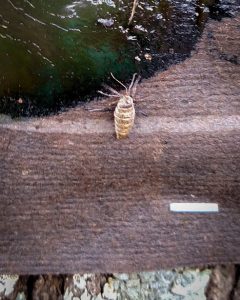
See all posts by this author
We don’t want to let our guard down, but there is good news regarding female cankerworms: Thanks to Mother Nature and the diligence of homeowners, the population has been greatly reduced. That means we can hold off on tree banding, at least for now. You know what we’re referring to, those sticky, dark bands you see wrapped around willow oaks and other species.
Paul Crenshaw, our Plant Health Care Manager, says female cankerworms have been scarce to nonexistent the past three years, except occasionally in the more rural areas in and around Charlotte. A hard freeze four years ago, combined with landowners installing bands in great number, have reduced the population.
Paul suggests that landowners take the money they budgeted for tree bands and apply it to winter fertilization, which will help your trees and shrubs prosper.
A little Tree Banding 101 for the uninitiated: Tree banding keeps the wingless adult female fall and spring cankerworms from laying their eggs in the crown of the tree. The bands are made from insulation and plastic and are covered in a sticky substance. Severe infestations of cankerworms can cause widespread defoliation, tree stress and possible tree death.
For now, Paul says, “We’re good to go.”
See all posts by this author

